Fehmi Emre Kadan
Alamouti-Like Transmission Schemes in Distributed MIMO Networks
Feb 08, 2023Abstract:The purpose of the study is to investigate potential benefits of using Alamouti-like orthogonal space-time-frequency block codes (STFBC) in distributed multiple-input multiple-output (D-MIMO) systems to increase the diversity at the UE side when instantaneous channel state information (CSI) is not available at radio units (RUs). Most of the existing transmission techniques require instantaneous CSI to form precoders which can only be realized together with accurate and up-to-date channel knowledge. STFBC can increase the diversity at UE side without estimating the downlink channel. Under challenging channel conditions, the network can switch to a robust mode where a certain data rate is maintained for users even without knowing the channel coefficients by means of STFBC. In this study, it will be mainly focused on clustering of RUs and user equipment, where each cluster adopts a possibly different orthogonal code, so that overall spectral efficiency is optimized. Potential performance gains over known techniques that can be used when the channel is not known will be shown and performance gaps to sophisticated precoders making use of channel estimates will be identified.
Practical Adversarial Attacks Against AI-Driven Power Allocation in a Distributed MIMO Network
Jan 23, 2023Abstract:In distributed multiple-input multiple-output (D-MIMO) networks, power control is crucial to optimize the spectral efficiencies of users and max-min fairness (MMF) power control is a commonly used strategy as it satisfies uniform quality-of-service to all users. The optimal solution of MMF power control requires high complexity operations and hence deep neural network based artificial intelligence (AI) solutions are proposed to decrease the complexity. Although quite accurate models can be achieved by using AI, these models have some intrinsic vulnerabilities against adversarial attacks where carefully crafted perturbations are applied to the input of the AI model. In this work, we show that threats against the target AI model which might be originated from malicious users or radio units can substantially decrease the network performance by applying a successful adversarial sample, even in the most constrained circumstances. We also demonstrate that the risk associated with these kinds of adversarial attacks is higher than the conventional attack threats. Detailed simulations reveal the effectiveness of adversarial attacks and the necessity of smart defense techniques.
A Theoretical Performance Bound for Joint Beamformer Design of Wireless Fronthaul and Access Links in Downlink C-RAN
Feb 13, 2021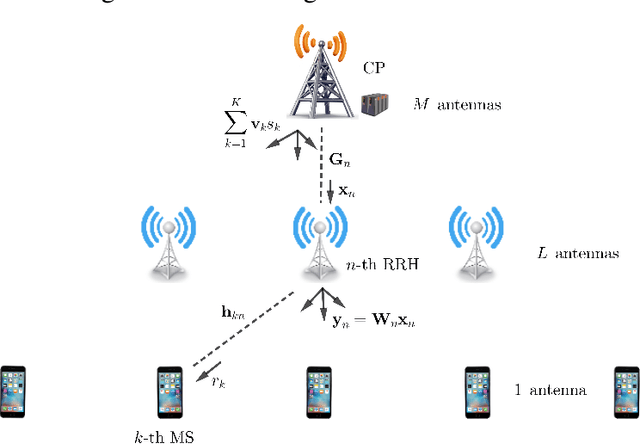
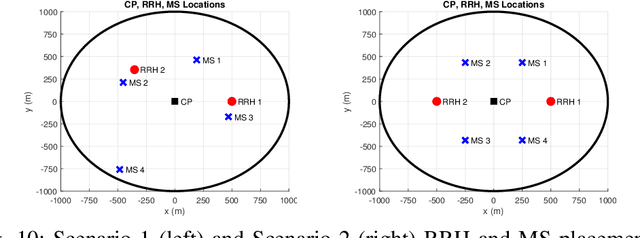
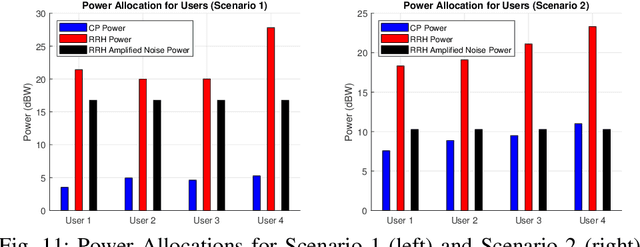
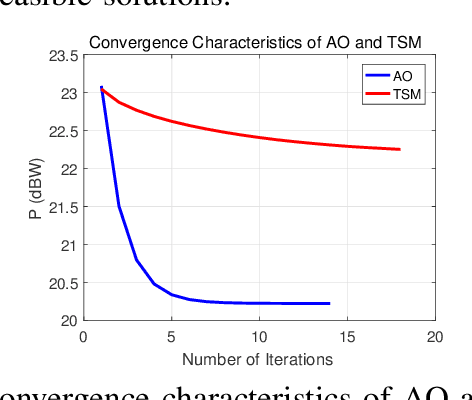
Abstract:It is known that data rates in standard cellular networks are limited due to inter-cell interference. An effective solution of this problem is to use the multi-cell cooperation idea. In Cloud Radio Access Network (C-RAN), which is a candidate solution in 5G and future communication networks, cooperation is applied by means of central processors (CPs) connected to simple remote radio heads with finite capacity fronthaul links. In this study, we consider a downlink C-RAN with a wireless fronthaul and aim to minimize total power spent by jointly designing beamformers for fronthaul and access links. We consider the case where perfect channel state information is not available in the CP. We first derive a novel theoretical performance bound for the problem defined. Then we propose four algorithms with different complexities to show the tightness of the bound. The first two algorithms apply successive convex optimizations with semi-definite relaxation idea where other two are adapted from well-known beamforming design methods. The detailed simulations under realistic channel conditions show that as the complexity of the algorithm increases, the corresponding performance becomes closer to the bound.
Beamformer Design with Smooth Constraint-Free Approximation in Downlink Cloud Radio Access Networks
Feb 13, 2021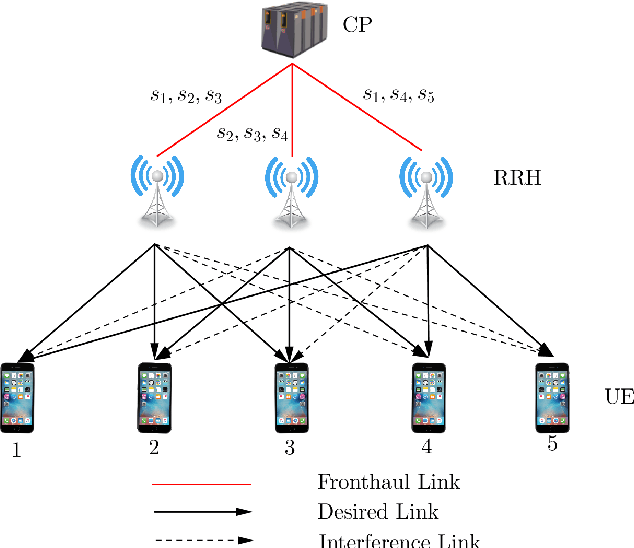
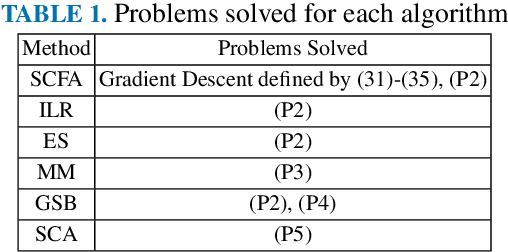
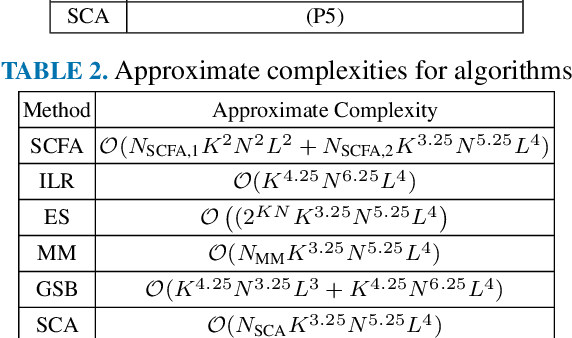
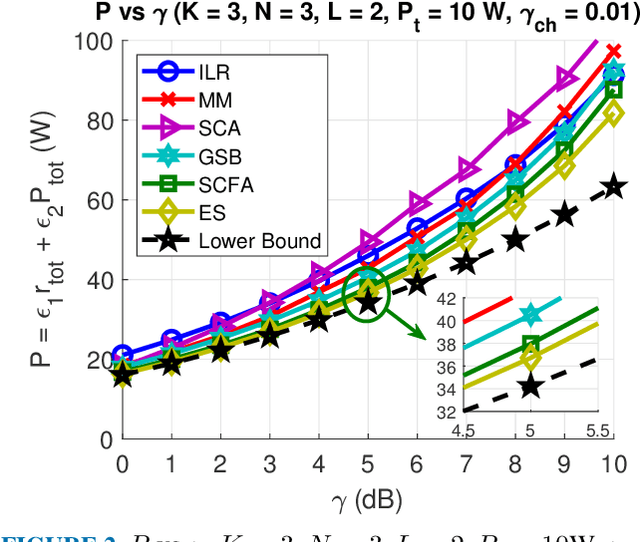
Abstract:It is known that data rates in standard cellular networks are limited due to inter-cell interference. An effective solution of this problem is to use the multi-cell cooperation idea. In Cloud Radio Access Network, which is a candidate solution in 5G and beyond, cooperation is applied by means of central processors (CPs) connected to simple remote radio heads with finite capacity fronthaul links. In this study, we consider a downlink scenario and aim to minimize total power spent by designing beamformers. We consider the case where perfect channel state information is not available in the CP. The original problem includes discontinuous terms with many constraints. We propose a novel method which transforms the problem into a smooth constraint-free form and a solution is found by the gradient descent approach. As a comparison, we consider the optimal method solving an extensive number of convex sub-problems, a known heuristic search algorithm and some sparse solution techniques. Heuristic search methods find a solution by solving a subset of all possible convex sub-problems. Sparse techniques apply some norm approximation ($\ell_0/\ell_1, \ell_0/\ell_2$) or convex approximation to make the objective function more tractable. We also derive a theoretical performance bound in order to observe how far the proposed method performs off the optimal method when running the optimal method is prohibitive due to computational complexity. Detailed simulations show that the performance of the proposed method is close to the optimal one, and it outperforms other methods analyzed.
 Add to Chrome
Add to Chrome Add to Firefox
Add to Firefox Add to Edge
Add to Edge